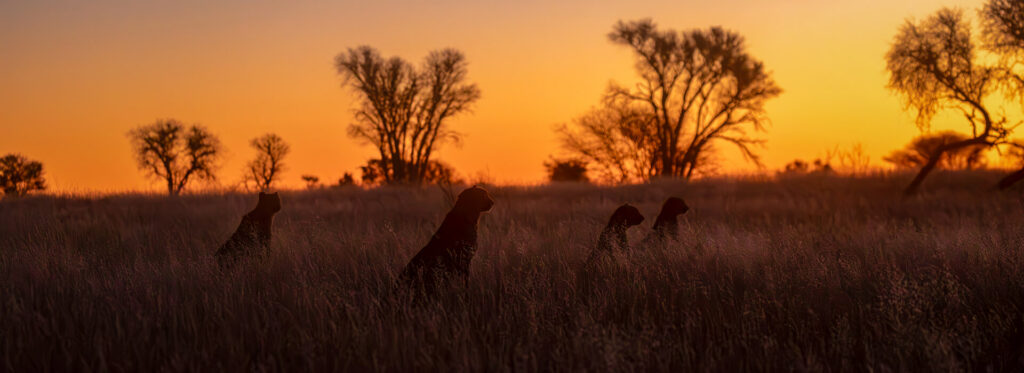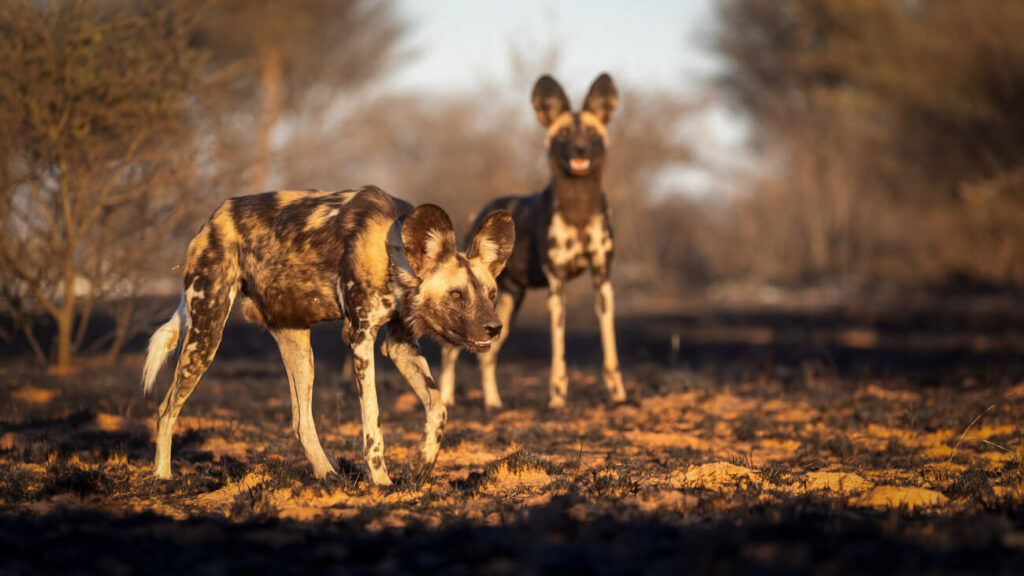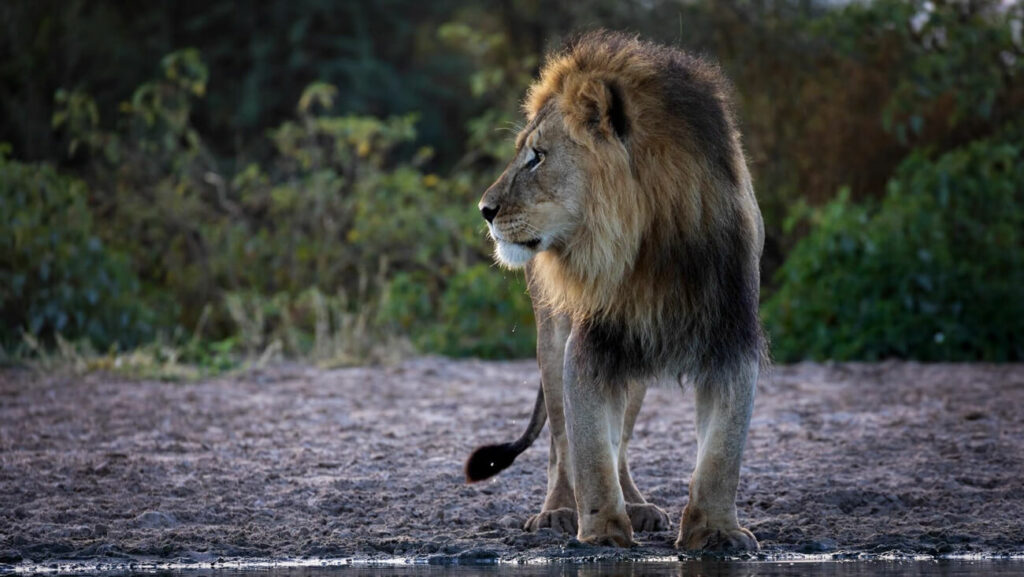Cheetah Monitoring & Conservation: Safeguarding the Icons of Speed
Khamab Kalahari: Cheetah Monitoring & Conservation in Action
Cheetah monitoring & conservation is a race against time. These sleek, spotted cats – the world’s fastest land mammal but in the Kalahari, speed alone isn’t enough. Cheetahs face a perilous future due to shrinking habitats, human conflict, and diminishing prey. Understanding cheetah ecology, behavior, and the vital role of research is essential to reverse their decline and preserve their iconic presence in Africa’s wild landscapes. From hunting strategies to raising cubs, discover why Khamab Kalahari Reserve’s cheetahs deserve our unwavering monitoring and protection.
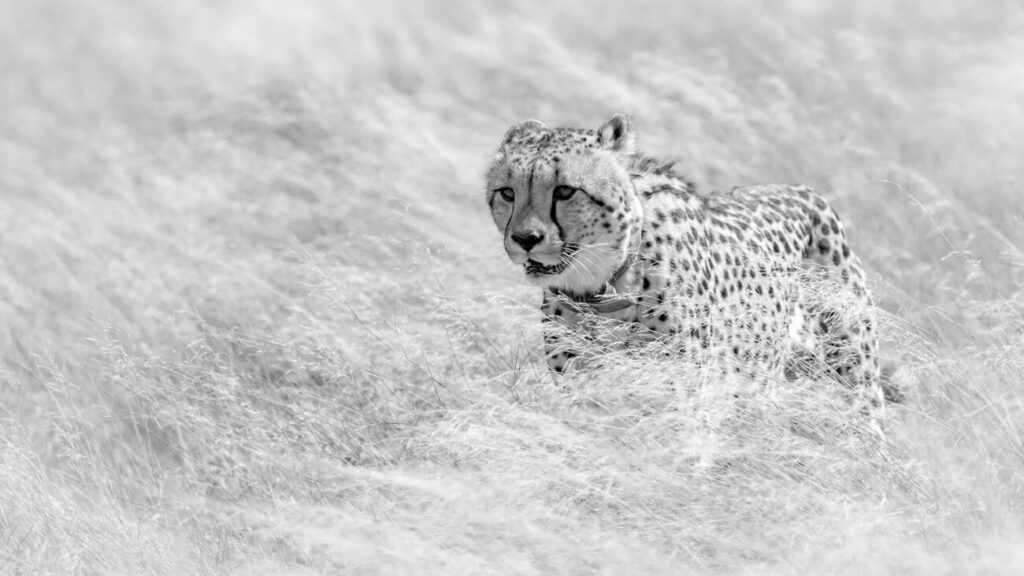
The Essence of the Cheetah
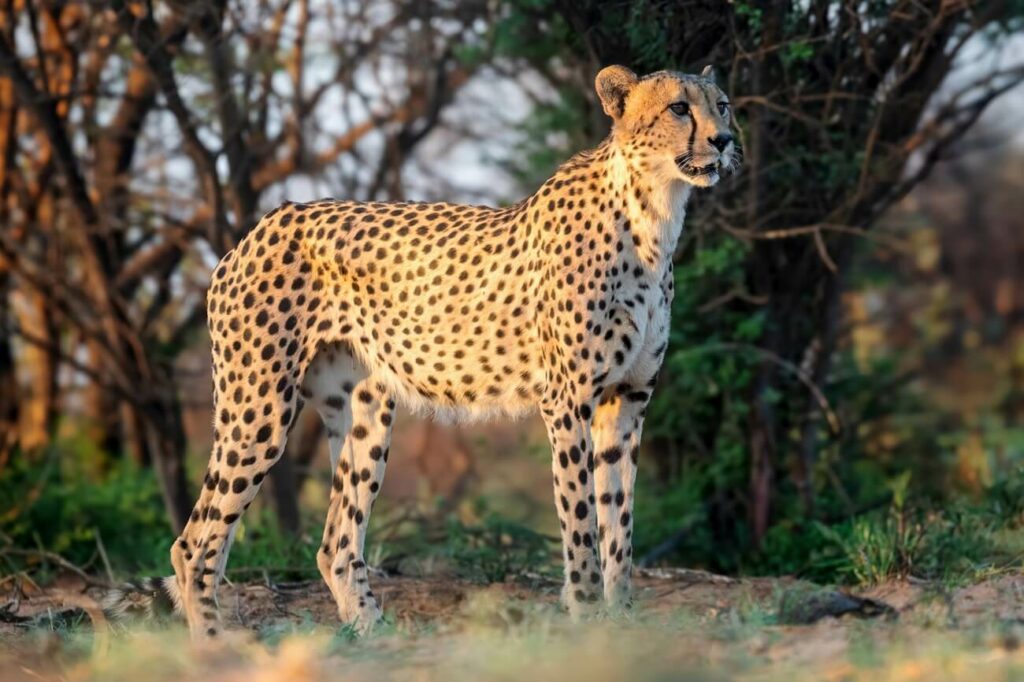
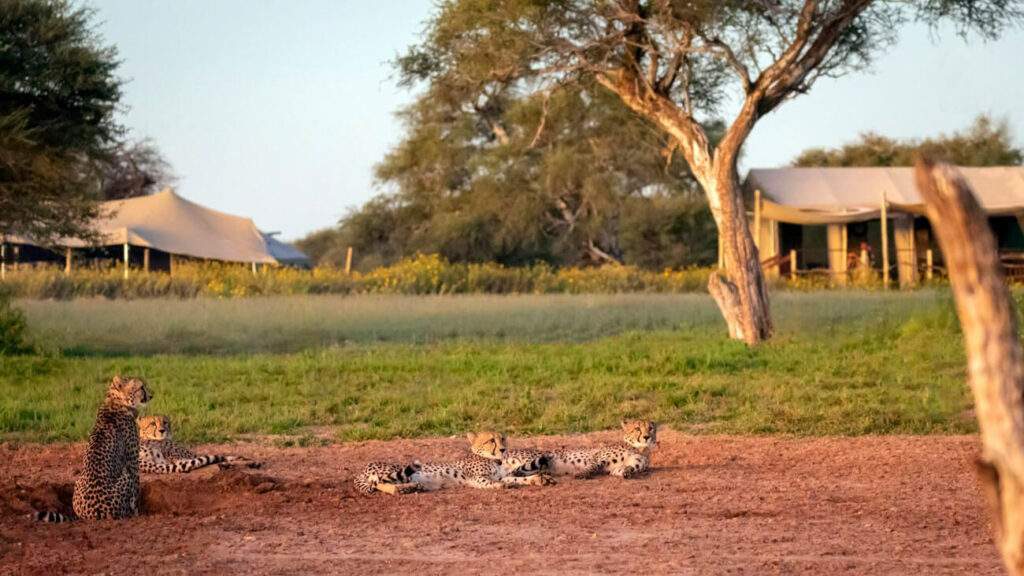
• Naming: The name “cheetah” originates from the Sanskrit word ‘chitraka‘ meaning “spotted one,” a fitting moniker for their striking coat pattern. Their scientific name, Acinonyx jubatus, translates to “immovable claw,” referring to their semi-retractable claws aiding in their high-speed pursuits.
• Taxonomy and Evolution: Cheetahs are unique among felids. They belong to their own subfamily, Acinonychinae – evidence of their long evolutionary divergence. Adapted for explosive speed, they are the sole surviving member of their genus, Acinonyx.
• Appearance: Cheetahs are built for speed. Their slender bodies, long legs, and flexible spines allow for incredible strides. Adults typically weigh 77-143 lbs (35-65 kg) and stand 28-36 inches (70-90 cm) at the shoulder. Their small heads and iconic black “tear marks” enhance vision.
• Precision Hunters: Specialized inner-ear structures help cheetahs maintain a stable head and focus on prey even during high-speed chases. Their inner ear balance system, or vestibular system, is remarkably developed. It contains three semicircular canals filled with fluid, detecting head movement, and guiding the brain, eyes, and muscles for precise coordination.
• A Unique Adaptation: Research shows cheetahs have a larger vestibular system and longer semicircular canals than any other living felid. Scientists believe competition with other large predators drove cheetahs to develop their high-speed hunting strategy, requiring this crucial inner-ear adaptation. This unique adaptation highlights the cheetah’s incredible specialization but also their vulnerability, as any disruption to their delicate balance system could have devastating consequences for their survival.
Superlative Sprinters & Solitary Strategists
• The Need for Speed: Capable of bursts up to 68-75 mph (110-120 km/h), cheetahs are supreme sprinters. Their anatomy – enlarged heart, powerful leg muscles – fuels their need for speed.
• Agility is Key: While top speed is impressive, research shows cheetahs rarely reach it in the wild. Instead, their ability to rapidly change direction with their tail acting as a rudder, coupled with remarkable acceleration and deceleration, is crucial for hunting success, even in slightly denser vegetation.
• Real-World Data: Modern technology offers insights into cheetah hunting speeds. One study in Botswana, GPS-collared wild cheetahs showed a maximum speed of 58 mph (93 km/h), with most hunts averaging a much slower 33 mph (53.7 km/h). This highlights how terrain and prey influence hunting strategy – in wooded savannas, agility and burst speed matter more than reaching maximum velocity.
• Social Structure: Unlike lions or wild dogs, cheetahs exhibit a spectrum of sociality. Males may form small coalitions (often brothers, but sometimes unrelated males), while females are generally solitary except when raising cubs.
• Hunting and Diet: Cheetahs are primarily diurnal hunters, relying on stealth and explosive sprints to subdue medium-sized prey like gazelles, impala, and young wildebeest. Their success rate is variable, influenced by habitat and prey availability.
• Adapting to Competition: While primarily diurnal hunters, we have observed cheetahs hunting successfully at night. Our cheetah monitoring at Khamab Kalahari Reserve, a region with notably low spotted hyena density, suggests frequent nighttime hunts by cheetahs, even during moonless periods. This indicates cheetahs may strategically adjust hunting times based on competitive pressure from other predators, rather than an inability to hunt successfully during periods of low light.
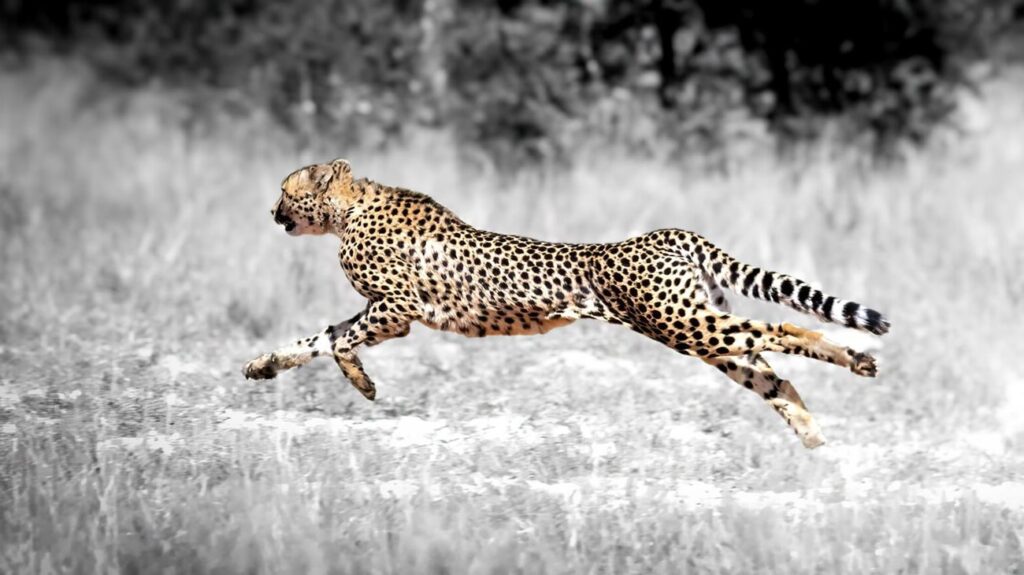
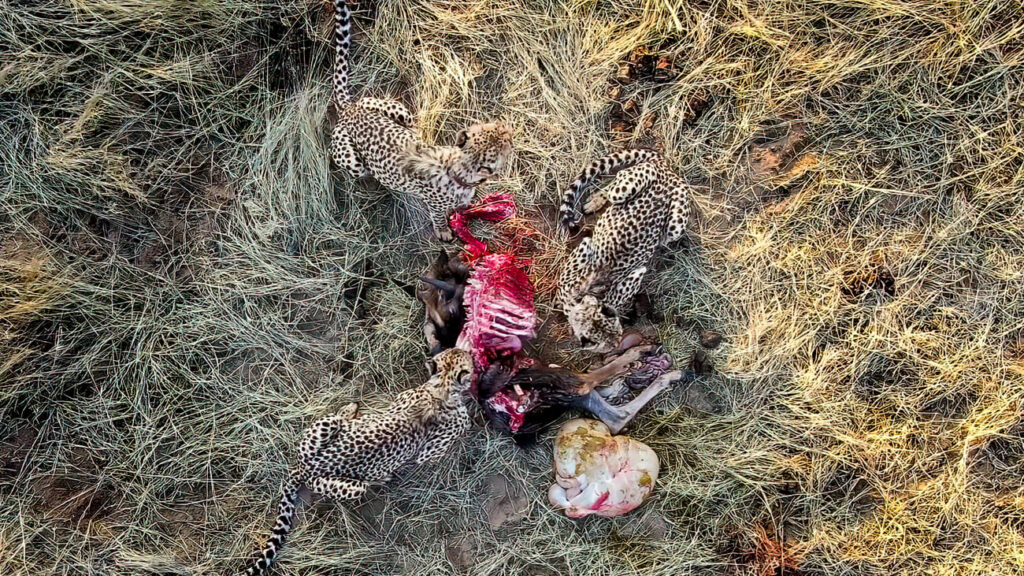
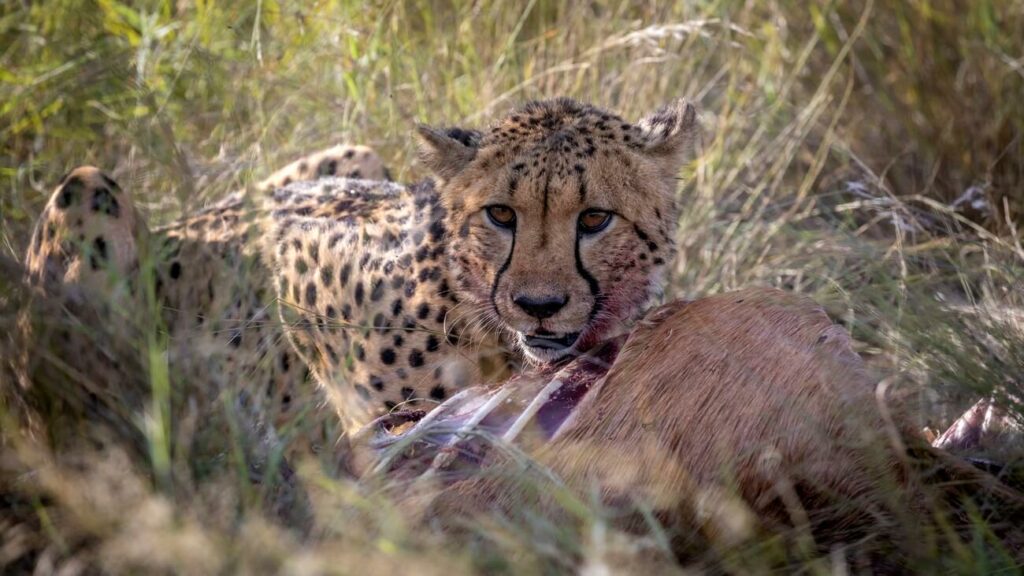
Cheetah Monitoring: A Fragile Existence
• Kalahari Survivors: Adapted for speed in open landscapes, cheetahs face unique challenges of habitat fragmentation and low prey density in the Kalahari. Long-term cheetah monitoring and studies track their genetic diversity and population health, vital for guiding conservation efforts.
• Temperament: While formidable hunters, cheetahs are generally less aggressive toward humans compared to other large predators. However, conflicts can arise when livestock is involved.
• Reproduction: Females give birth to roughly 3-5 cubs after a gestation of about 90-95 days. Cub mortality in the wild is high due to predation and challenging conditions.
• Historical Decline: Cheetahs once ranged widely across Africa and into Asia. Today, they are found mainly in fragmented populations in eastern and southern Africa, with a critically endangered Asiatic cheetah subspecies clinging to survival in Iran.
Threats and the Crucial Need for Conservation
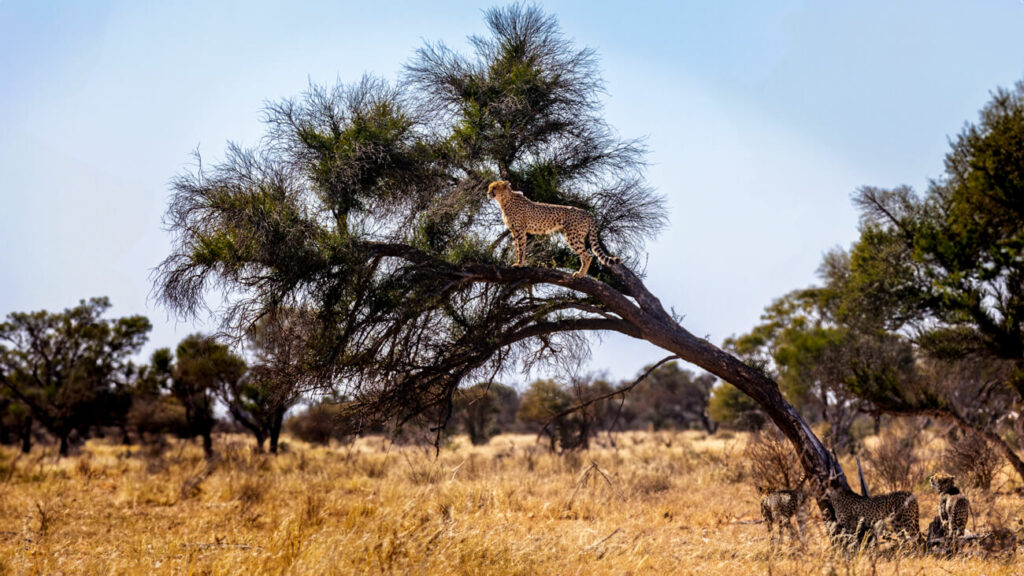
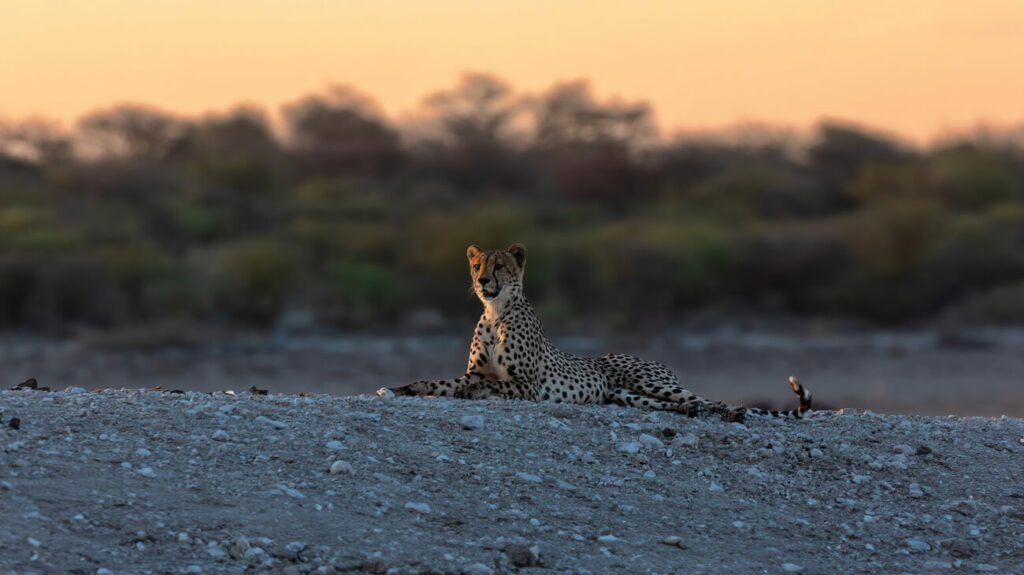
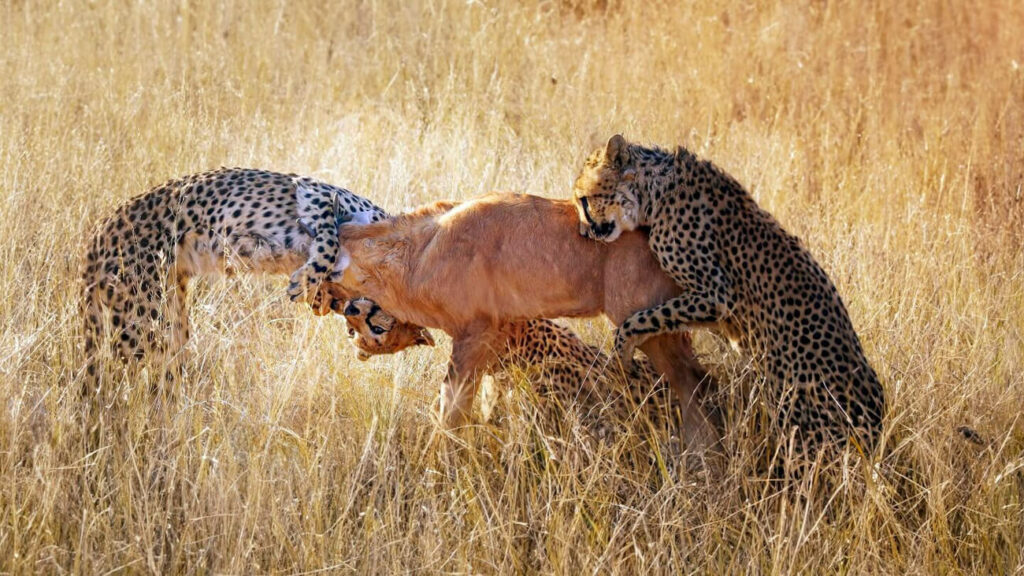
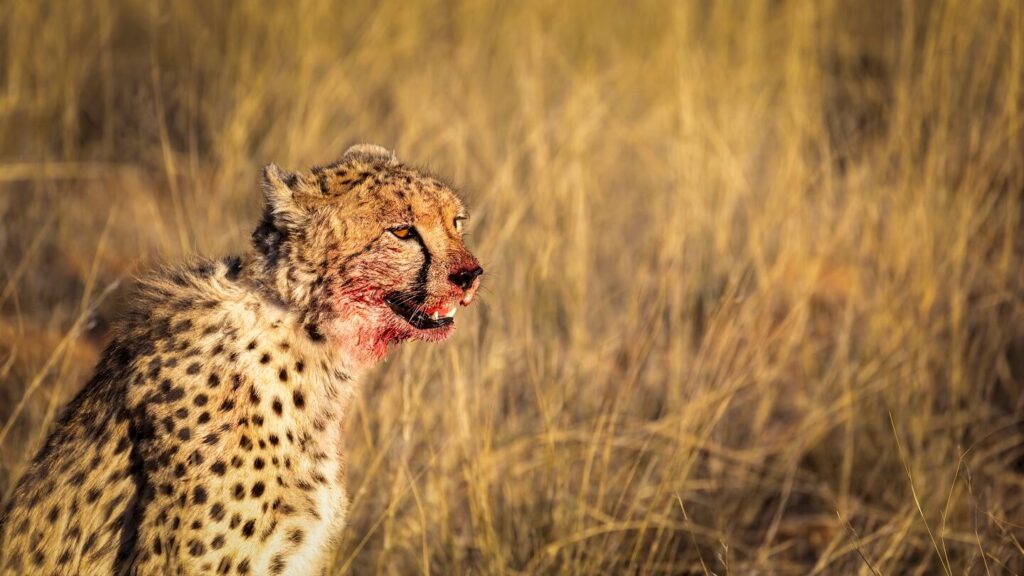
• Habitat Loss and Fragmentation: The conversion of wildlands for agriculture, settlements, and infrastructure is the single biggest threat to cheetahs. As their open grasslands and savanna habitats shrink and become fragmented, cheetahs struggle to find sufficient prey and suitable territories. This is further perpetuated by bush encroachment caused by a changing climate. Often, this results in cheetahs hunting livestock leaving leading to the next major threat, conflict. Furthermore, it makes cheetah monitoring that much more difficult.
• Human-Wildlife Conflict: This loss of habitat is pushing cheetahs into finding new territories and with little available wilderness areas remaining, cheetahs are forced to enter livestock areas. Farmers perceive cheetahs as a threat to their valuable livestock leading to the indiscriminate trapping, shooting, and poisoning of cheetahs.
• Exotic Pet Trade: Despite being ill-suited for captivity, a devastating trade persists, fueling the capture of cheetah cubs for the exotic pet market. This further depletes wild populations and subjects cheetahs to cruel and often deadly conditions.
• Genetic Bottleneck: Historic cheetah declines and their current fragmented range have led to isolated populations with low genetic diversity. This makes them more vulnerable to disease outbreaks, reduces reproductive success, and hinders their ability to adapt to environmental changes.
Conservation: Research, Cheetah Monitoring, and the Path Forward
The Power of Data
Research and effective cheetah monitoring are the cornerstones of cheetah conservation. Studying their population dynamics, movement patterns, and hunting strategies provides critical information for targeted conservation efforts.
Holistic Approach
Effective conservation requires addressing habitat protection, mitigating human-wildlife conflicts, educating communities, and combating illegal trade.
Monitoring at Khamab
Working with Wildlife actively performs cheetah monitoring on Khamab Kalahari Reserve to determine kill frequency, prey selection, and territories. Population estimates are made by identifying individual animals through their unique spot patterns, using these several methods:
- Satellite Tracking: Select cheetahs are fitted with satellite collars to track their movements and identify key marking posts and play trees – typically angled shepherd trees where they climb, urinate, and/or defecate to leave scent messages. These scent markers are more vital than vocal calls for cheetahs to find mates or rivals.
- Camera Trapping: We strategically position camera traps around these identified marking sites. Photos allow for identification of other cheetahs in the area based on their hind leg and tail spot patterns.
- Population Dynamics: Building a database through this combined approach allows for cheetah population estimates and insights into their social structure.
Why It Matters
Cheetahs, as apex predators, are ecological ‘thermometers.’ Threats they face are often early warning signs of issues impacting the broader Kalahari. Bush encroachment is eroding suitable cheetah habitat, further placing pressure on populations. Much like African wild dogs, cheetahs are prolific hunters, and their impact must not be underestimated.
Ready to Make a Difference? Begin Your Cheetah Monitoring Journey? Contact us today!
More questions, read our FAQs
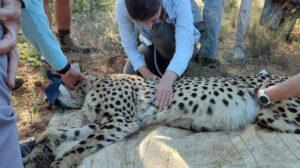

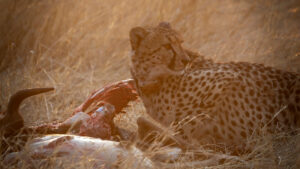
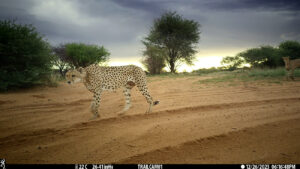
Cheetah Monitoring FAQ’s
Our Location
